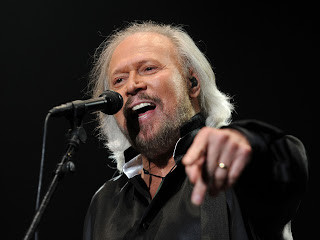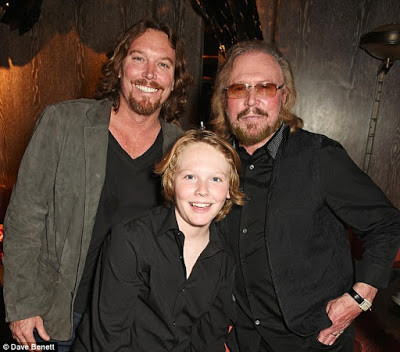Barry Gibb, the legendary voice of the Bee Gees, recently shared captivating insights into the making of one of the band’s most iconic hits, “You Should Be Dancing.” Celebrating its 40th anniversary of reaching number one in the US charts, this disco anthem is more than just catchy lyrics; it’s a testament to the Bee Gees’ innovative spirit and their deep dive into rhythm and vocal experimentation. This article delves into the fascinating backstory of “You Should Be Dancing,” exploring the intricate layers that made it a global sensation and a cornerstone of the disco era.
The Genesis of a Dance Floor Filler: Crafting the Rhythm of “You Should Be Dancing”
In a recent interview, Barry Gibb reminisced about the meticulous process behind “You Should Be Dancing,” revealing that the track wasn’t an overnight creation. “I remember that we cut the track at least four times,” Gibb stated, highlighting the band’s commitment to perfection. This wasn’t a simple recording session; it was an exploration. The Bee Gees, immersed in the vibrant Latin rhythms of their Miami surroundings, were on a quest to discover “more accurate rhythms” and infuse their music with a fresh, danceable energy.
Adding to the song’s rich tapestry, legendary musician Stephen Stills contributed percussion, even working into the early hours of the morning. Gibb recalled, “Stephen Stills playing percussion at 5 in the morning…playing sticks.” This collaboration underscores the collaborative and experimental atmosphere in the studio, where the Bee Gees pushed boundaries to achieve their sonic vision for “You Should Be Dancing.”
Vocal Innovation and the Falsetto Trumpet: Decoding the Sounds of “You Should Be Dancing”
“You Should Be Dancing” is instantly recognizable for its infectious rhythm and Barry Gibb’s soaring falsetto. However, what might be surprising to many is the extent of vocal experimentation within the track. Gibb revealed a hidden gem within the mix: “buried within the final mix of ‘You Should Be Dancing’ is Barry singing along in falsetto with the iconic trumpet solo.”
This vocal trumpet, seamlessly blended into the instrumental arrangement, is a testament to the Bee Gees’ innovative approach to music production. In an era of rapidly evolving studio technology, they embraced the possibilities of multi-tracking, layering vocals and instruments to create a uniquely rich and dynamic sound. Gibb also mentioned similar vocal techniques in other hits like “Jive Talkin’,” where he sang the instrumental parts, demonstrating their consistent exploration of vocal textures.
The mixing process for “You Should Be Dancing” was equally groundbreaking and challenging. Gibb described a collaborative effort involving “10 of us to mix that song…10 at the board.” In the pre-digital age, mixing was a live performance, requiring all engineers to simultaneously adjust faders to achieve the perfect balance. Gibb’s specific role was controlling the echo repeat on the line, “Whatcha’ doin’ on ya’ back?” This intricate, real-time mixing process highlights the dedication and artistry poured into crafting this disco masterpiece.
“You Should Be Dancing”: More Than Just Lyrics, A Cultural Phenomenon
Beyond the technical brilliance, “You Should Be Dancing” captured the spirit of an era. The late 1970s were the height of disco, and the Bee Gees were at the forefront of this cultural movement. Gibb acknowledged the zeitgeist, stating, “suddenly everyone was wanting to dance and we wanted to make a record like that.” “You Should Be Dancing” wasn’t just a song; it was an invitation to join a global dance revolution.
Gibb also drew a parallel to Paul McCartney’s admiration for the Beach Boys, suggesting that “You Should Be Dancing” was, in part, inspired by a desire to create music that resonated with the danceable energy of the time. While songs like “How Deep Is Your Love” were born from pure inspiration, “You Should Be Dancing” was consciously crafted to meet the cultural moment, becoming an anthem that defined a generation.
Reflecting on a Legacy: “You Should Be Dancing” and Barry Gibb Today
Looking back, Barry Gibb recognizes the special quality of “You Should Be Dancing.” While artists often struggle to predict a song’s success, Gibb admits there was a sense that this track was “special.” It wasn’t just about chart success; it was about capturing a feeling, an energy, and a cultural shift.
Today, Barry Gibb continues to create music, as evidenced by his new album, “In The Now.” This new work demonstrates his enduring artistry and relevance in the contemporary music scene. While “You Should Be Dancing” remains a timeless classic, Gibb’s ongoing creativity ensures his legacy extends far beyond the disco era. Exploring the lyrics and the innovative sounds of “You Should Be Dancing” offers a glimpse into the genius of the Bee Gees and the enduring power of music to move us, both physically and emotionally.


